Scalable
Clearance of Host Cell Protein with Novel Mixedmode Resin HCPure™: Sf9 and HEK293 case studies
K. Morante, C. Jones, J. Lembo, C. Burdett, I. Scanlon, L. Knightley, C. Booth Astrea Bioseparations, Horizon Park, Barton Road, Comberton, Cambridge, CB23 7AJ, UK
Abstract
Removal of host cell proteins (HCP) and final product purity are critical to effective therapeutic outcomes.
A range of negative outcomes can occur as a consequence of failing to effectively clear the final sample of HCPs, from changes in therapeutic effectiveness to immunogenic responses in the patient.
Multistep purification processes are typically followed to ensure HCPs are removed. Mixed-mode chromatography can be used to streamline the polishing process by utilizing both hydrogen bonding and hydrophobic interaction binding methods, resulting in significant savings in processing time, and a reduction in buffer and materials used.
HCPure host cell protein clearance resin from Astrea Bioseparations and its affiliates is a mixed-mode chromatography resin, designed for the removal of host cell proteins, host cell DNA, and high molecular weight aggregates.
Here we demonstrate that the unique binding profile allows for two key advantages: utilization of mixed-mode to create a highly tuneable purification platform for a variety of conditions, and the ability to purify feed streams that other resins can struggle to effectively clean.
1
2 IgG producing HEK293 feedstock
A design of experiments (DoE) screen was carried out for the polishing step of a post-affinity IgG rich feedstock derived from HEK293 cells, comparing the performance of HCPure to another commercially available mixed-mode adsorbent. The screen used a full factorial design assessing the effect of conductivity (6 – 18 mS/cm) and pH (pH 6 - 8) on IgG yield and HCP removal. 200 µL RoboColumns® were used to better represent typical chromatography conditions.
Commercial Alternative HCPure

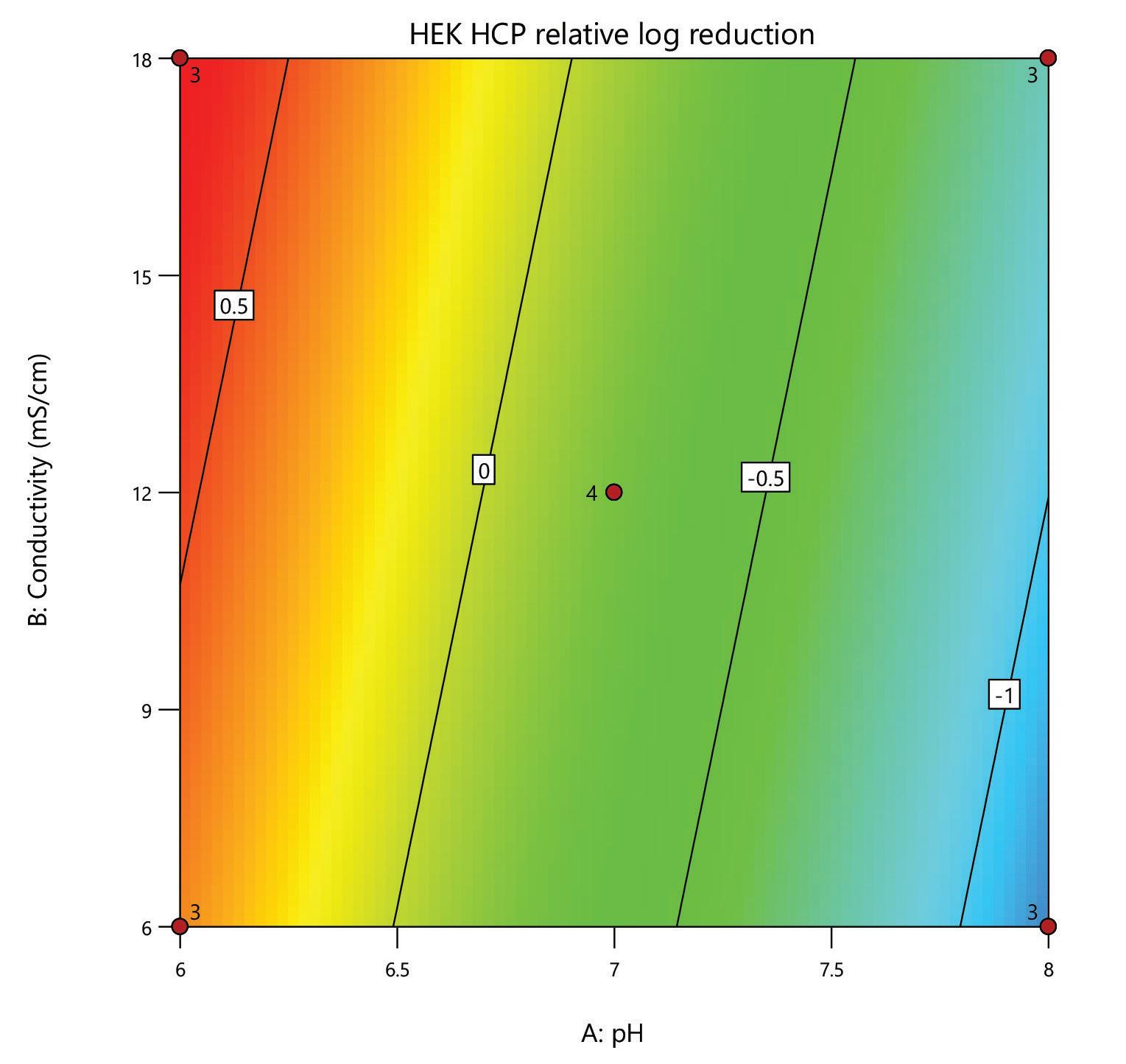
HCPure
with high IgG
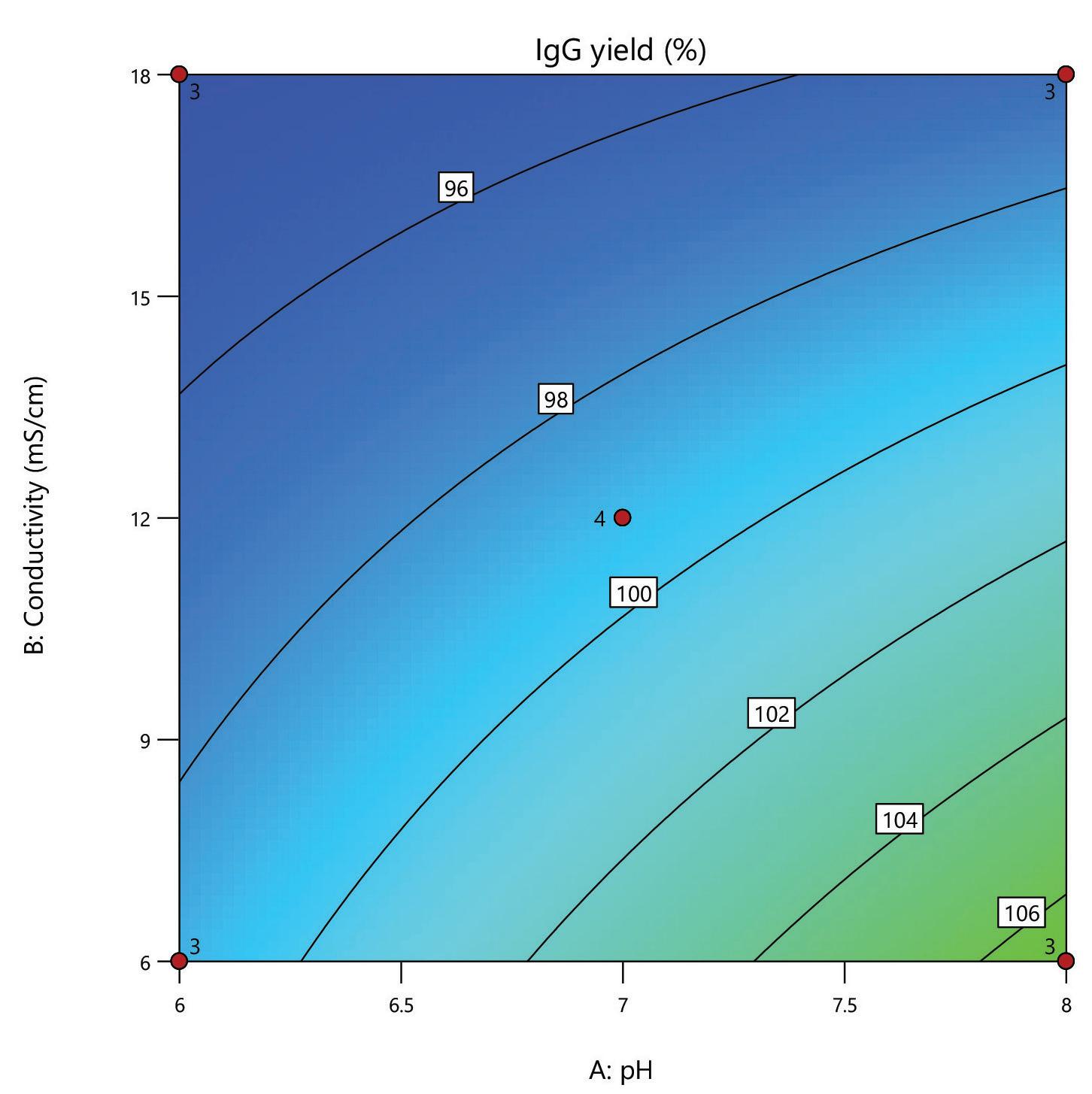
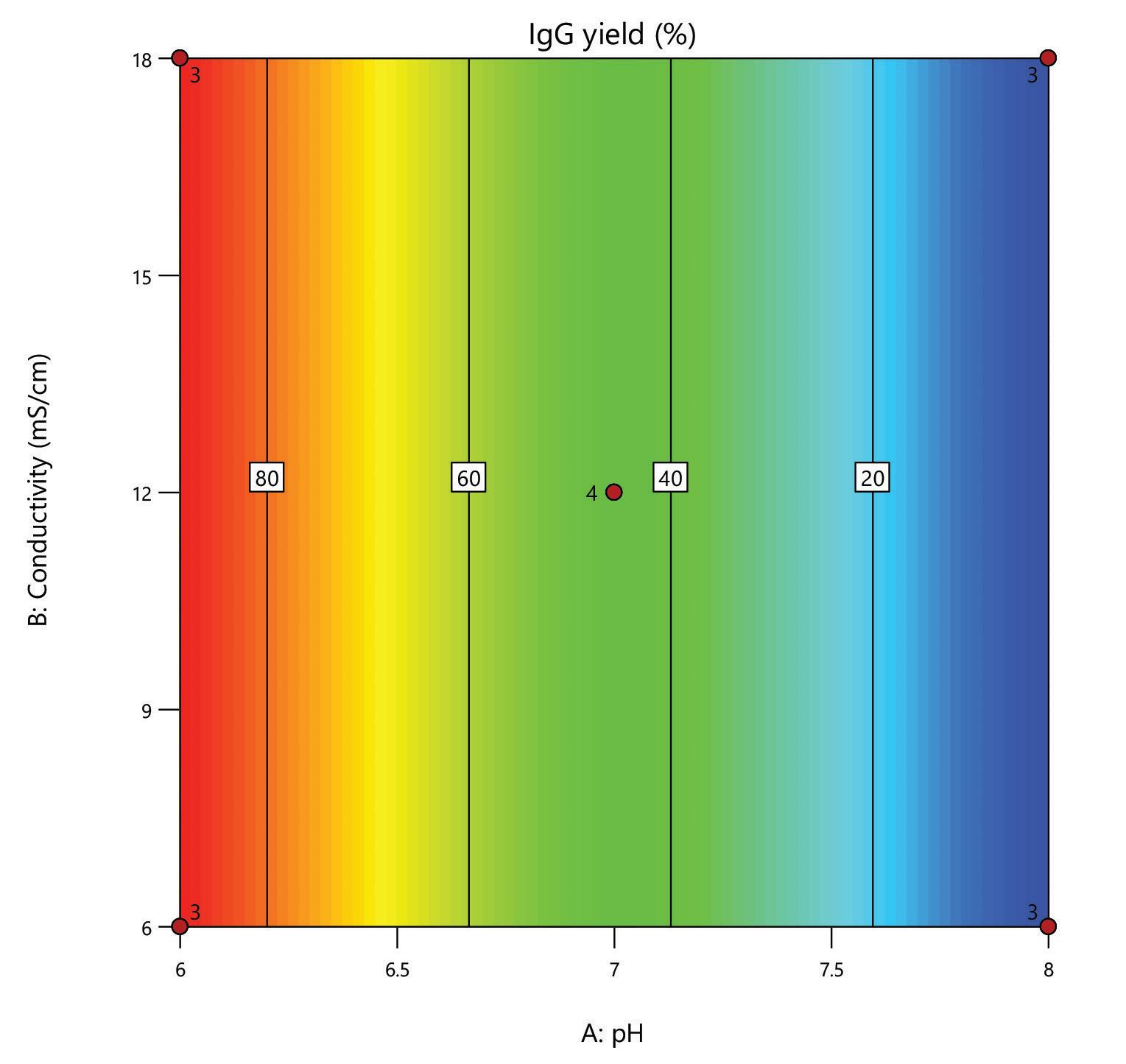
AAV9 producing Sf9 feedstock
A DoE screen was carried out for the polishing step of a post-affinity AAV9 rich feedstock derived from Sf9 cells, comparing the performance of HCPure to another commercially available mixed-mode adsorbent. The screen was performed in 200 µL RoboColumns® and used a full factorial design to assess the effect of pH (pH 6 - 8) and load volume (1 – 4 mL) on AAV9 yield and HCP removal.





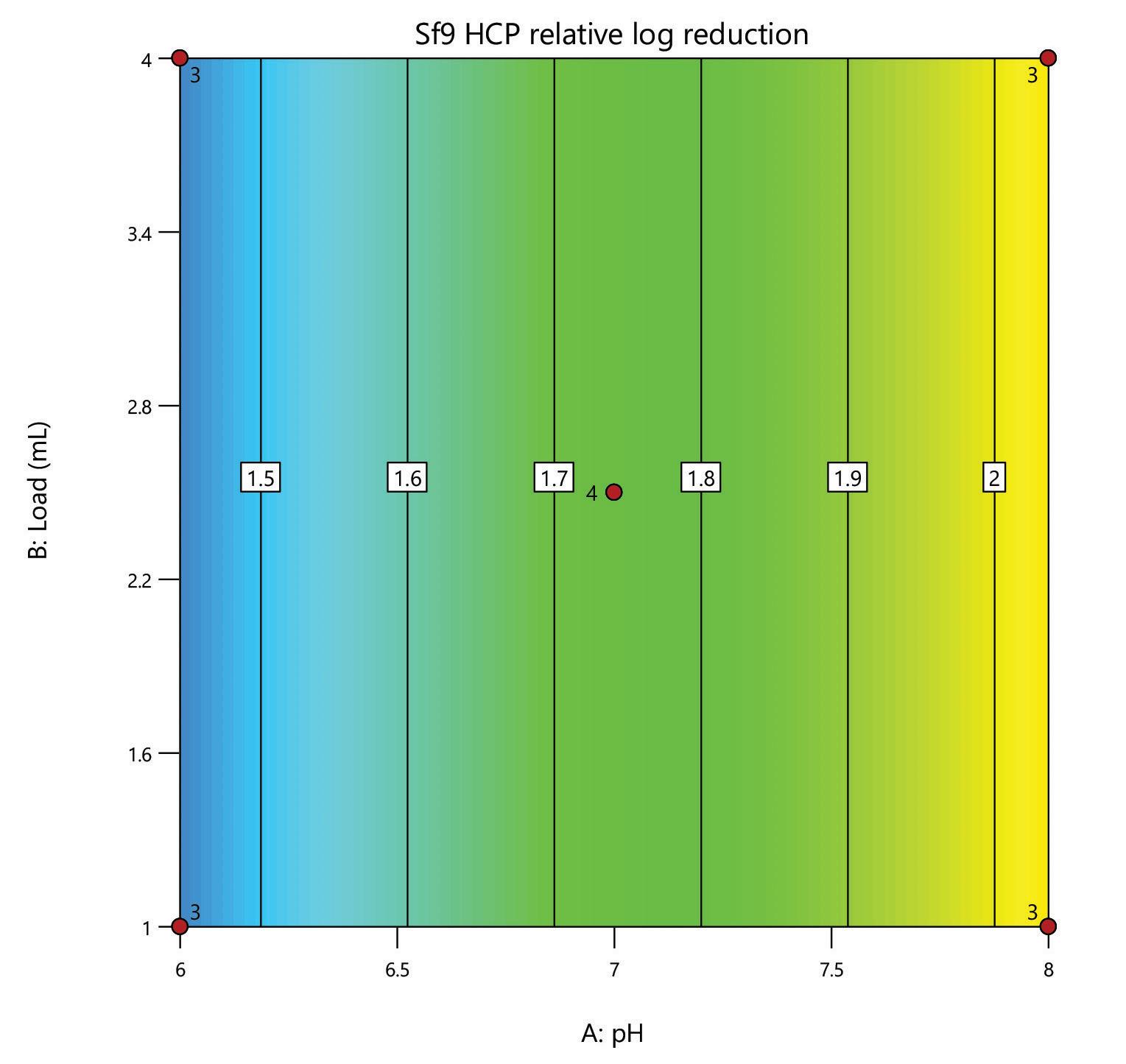
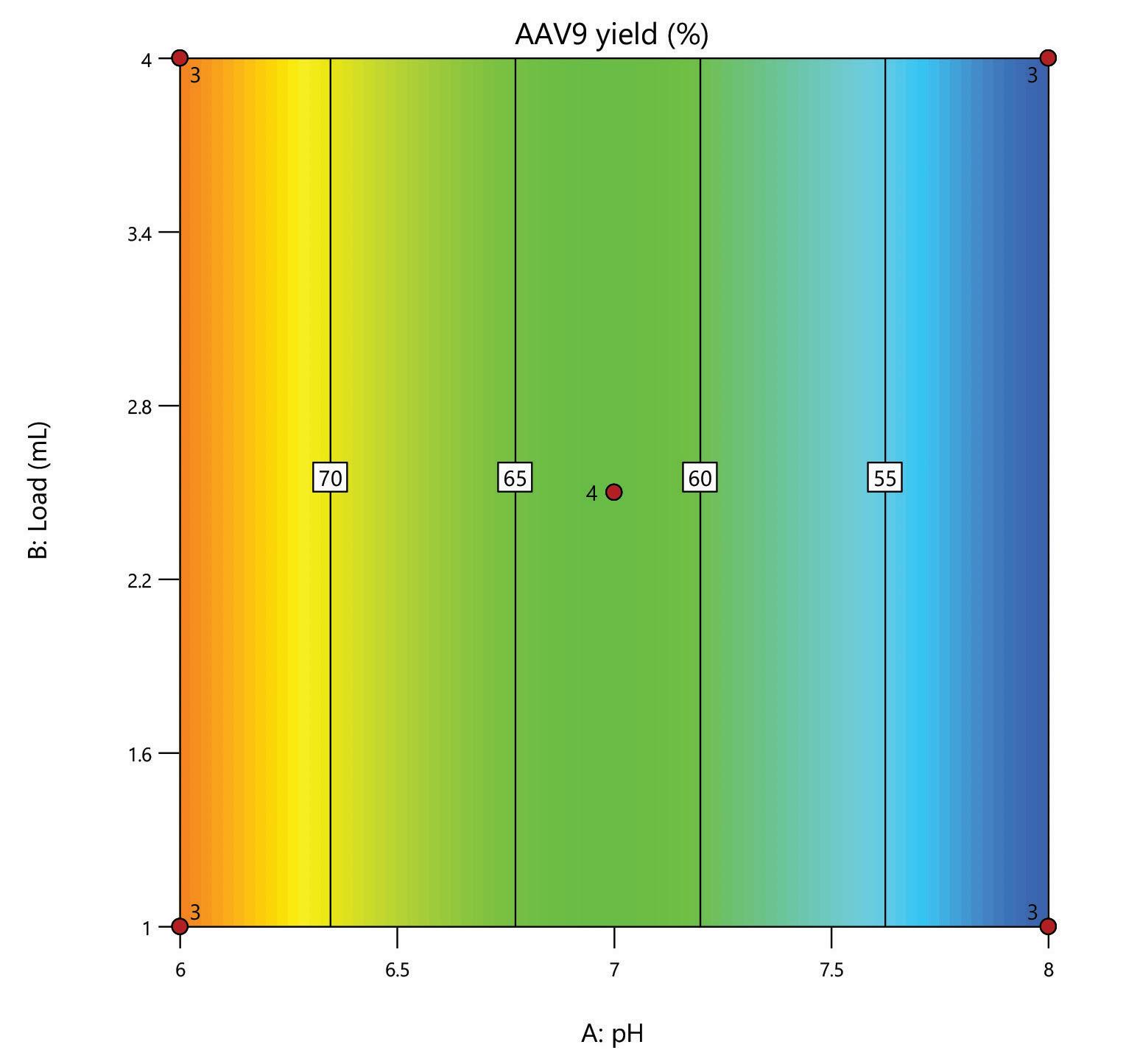
AAV5 & AAV9 producing HEK293 feedstock
Feedstocks for AAV5 and AAV9, derived from HEK293 cells, were also polished using HCPure™ in flow through mode. These were screened in 200 µL RoboColumns® following a post-affinity capture step with commercially available AAV affinity adsorbents. 1 mL of the AAV feedstocks were loaded onto HCPure directly from their post-affinity storage buffers (~ 30 mS/cm, pH 7.5). AAV recoveries were around 80% with a 2-fold increase in purity.
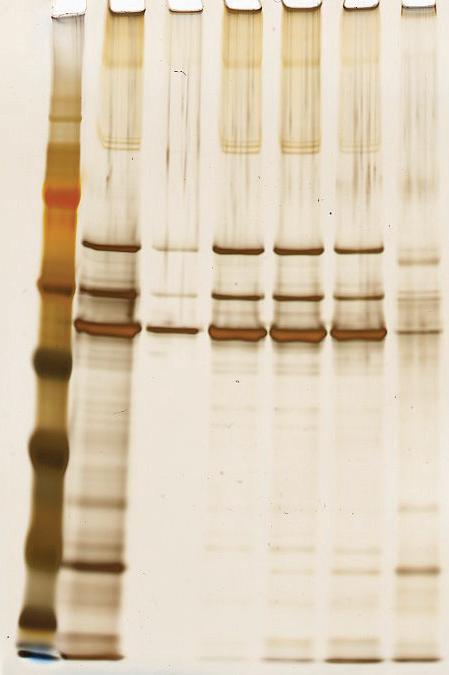
robust performance across the full range of pH and conductivities assessed,
yield
separation from HCP. Under the same conditions the commercial alternative showed pH related performance with increased IgG binding with increased buffer pH. HCPure showed improved purity performance at lower pH and lower load volumes. However, HCPure also demonstrated high AAV9 recovery across the range of pH and load volumes assessed. Under the same conditions, the commercial alternative showed significantly lower AAV9 yield. 1 1 2 2 HCPure™ HCPure™ Commercial Alternative Commercial Alternative
demonstrated
and
3
Summary
mixed mode HCPure resin from Astrea Bioseparations has been screened as a polishing step for a variety of targets and expression systems. For expression systems typically used in the cell and gene therapy field, such as HEK293 and Sf9, screening of HCPure against a range of loading conditions and compared to another commercially available mixed-mode adsorbent demonstrated the robust performance of HCPure HCPure showed minimal influence from buffer conditions on target yield along with separation of the target from HCP. Furthermore, the ability of HCPure to separate HEK293 HCP from different AAV serotypes directly from the post-affinity storage buffers was demonstrated at screening and research scale, illustrating the potential of HCPure as a platform technology. Run 1 (pH/cond) Run 2 (pH/cond) 6/6 8/6 6/6 8/6 6/6 8/6 6/18 8/18 6/18 8/18 6/18 8/18 7/12 7/12 7/12 7/12 Run 1 (pH/Vol) Run 2 (pH/Vol) 6/1 8/1 6/1 8/1 6/1 8/1 6/4 8/4 6/4 8/4 6/4 8/4 7/2.5 7/2.5 7/2.5 7/2.5 HCPure™ Load condition IgG load (mg/mL ads) Average IgG NB Recovery (%) HCP Load (ppm) Average HCP NB Recovery (ppm) Average Relative Log Clearance Average Purity Fold Change Load (pH 6, 6 mS/cm) n=3 12.56 98.93 106 47 0.36 2.3 Load (pH 6, 18 mS/cm) n=3 9.96 94.35 137 51 0.43 2.7 Load (pH 7, 12 mS/cm) n=4 9.86 101.79 109 55 0.30 2.0 Load (pH 8, 6 mS/cm) n=3 11.48 106.76 89 47 0.28 1.9 Load (pH 8, 18 mS/cm) n=3 9.59 96.72 138 48 0.46 2.9 HCPure™ Load condition AAV load (capsids/mL ads) Average AAV NB Recovery (%) HCP Load (ng) Average HCP NB Recovery (ng) Average Relative Log Clearance Average Purity Fold Change Load (pH 6, 1 mL) n=3 3.98E+12 83.81 276 9 1.39 24.70 Load (pH 6, 4 mL) n=3 1.59E+13 79.20 1104 46 1.28 18.93 Load (pH 7, 2.5 mL) n=4 9.29E+12 93.47 651 132 0.67 4.66 Load (pH 8, 1 mL) n=3 3.94E+12 97.92 245 79 0.48 3.05 Load (pH 8, 4 mL) n=3 1.58E+13 86.79 981 475 0.25 1.79 Serotype Replicate AAV load (capsids/mL ads) AAV NB Recovery (capsids/mL ads) AAV NB Recovery (%) HCP Load (ng) HCP NB Recovery (ng) Average Relative Log Clearance Purity Fold Change AAV9 1 2.84E+13 2.32E+13 81.81 191 83.8 0.27 1.9 2 3.00E+13 105.60 95.3 0.33 2.1 AAV5 1 2.20E+13 1.70E+13 77.12 29.1 12.0 0.27 1.9 2 1.77E+13 80.13 11.8 0.30 2.0 A B C D E F G H A B C D E F G H IgG yield (%) Relative HCP log reduction Commercial Alternative HCPure AAV9 yield (%) Relative HCP log reduction
Polishing of an AAV feedstock on HCPure™ has also been demonstrated in column mode. An AAV2 feedstock derived from HEK293 cells showed significant HCP burden post-affinity capture step with a commercially available AAV affinity adsorbent. HCPure was packed into a SNAP® column (10 mm i.d. SNAP® column to a 10 cm bed height) and used in flow-through mode to purify the AAV2. The AAV2 was loaded in the post-affinity storage buffer and fractions were collected across the load to monitor HCP recovery. The SDS-PAGE illustrates the separation of AAV2 and HCP across the flow-through (FT) fractions, particularly FT1 and FT2.
AAV2 producing HEK293 feedstock Scaled Up HCPure™ Performance in Column Mode kDa 97 191 VP1 VP2 VP3 64 51 39 28 19 14 1 2 3 4 5 6 7 Samples 1: MW marker 2: AAV2 Intermediate Load 3: FT1 4: FT2 5: FT3 6: FT4 7: Eluate CHO E.coli Pichia HEK Sf9 IgG X X Vκ X Vh X AAV X X Expression System Target Any data or results provided are only examples and do not provide any guarantee of similar results in future. The products of Astrea Bioseparations may be covered by or for use under one or more patents: astreabioseparations.com/patents All trademarks, trade names, trade dress, product names and logos are the property of Astrea UK Services Ltd or their respective owners. © 2024 Astrea Bioseparations Ltd. All rights reserved Search: Astrea Bioseparations
The
RoboColumn® Screening for HCPure™ Performance
4












